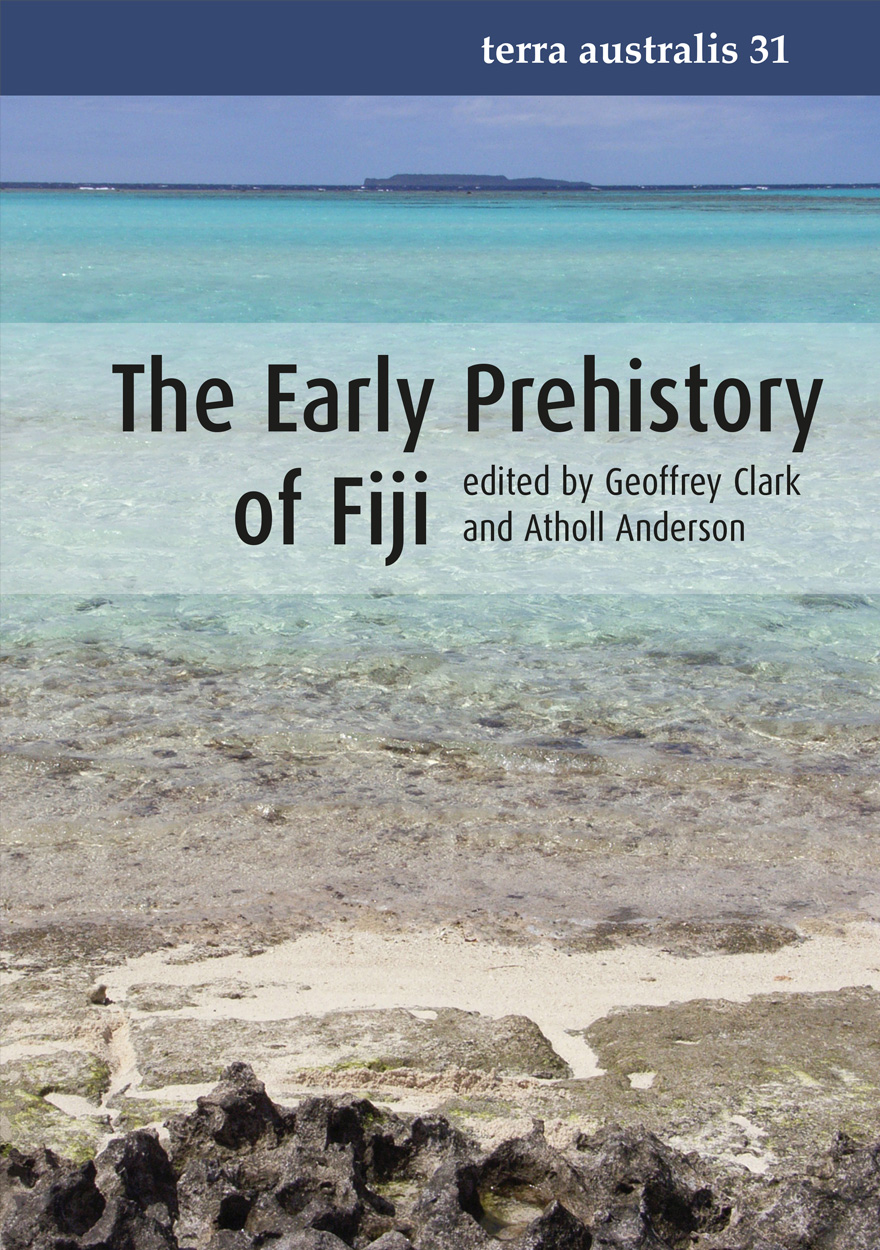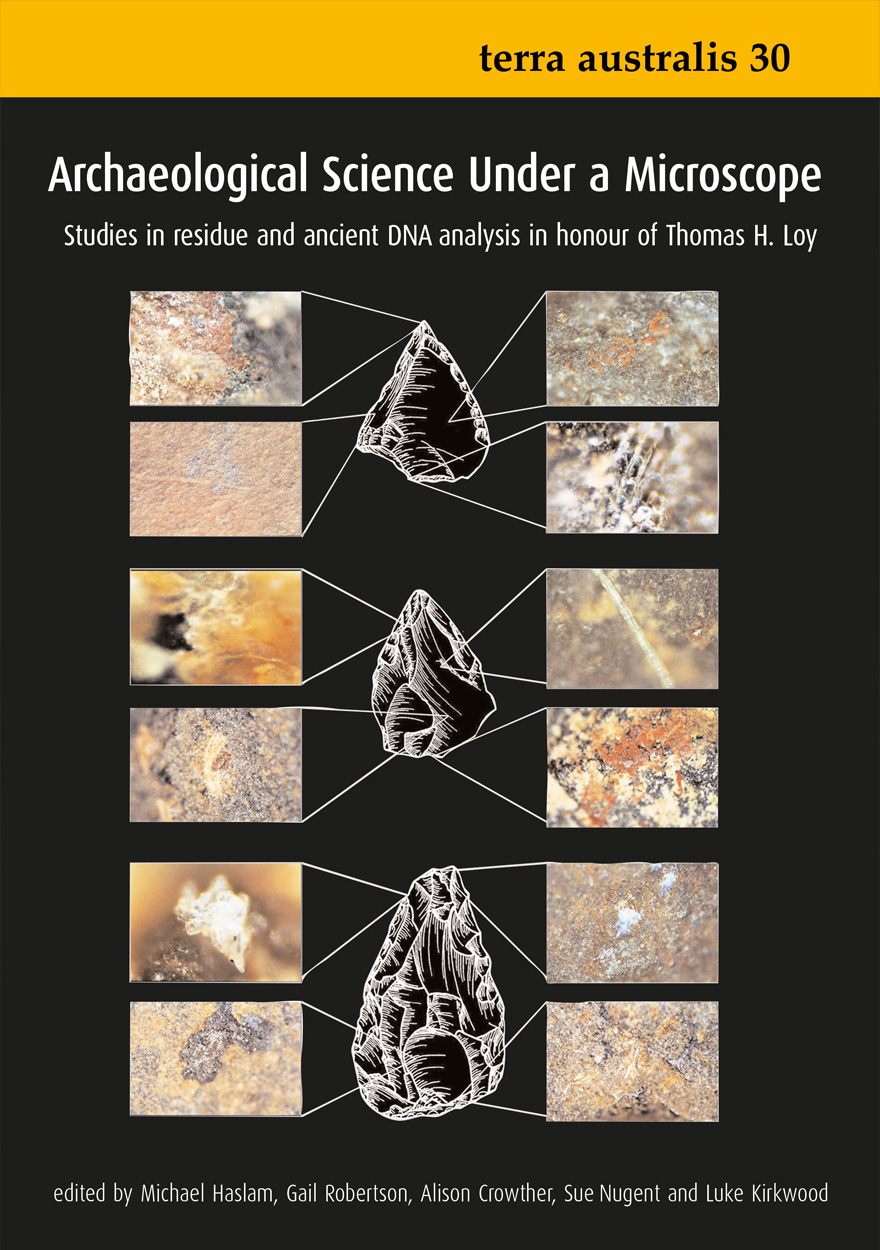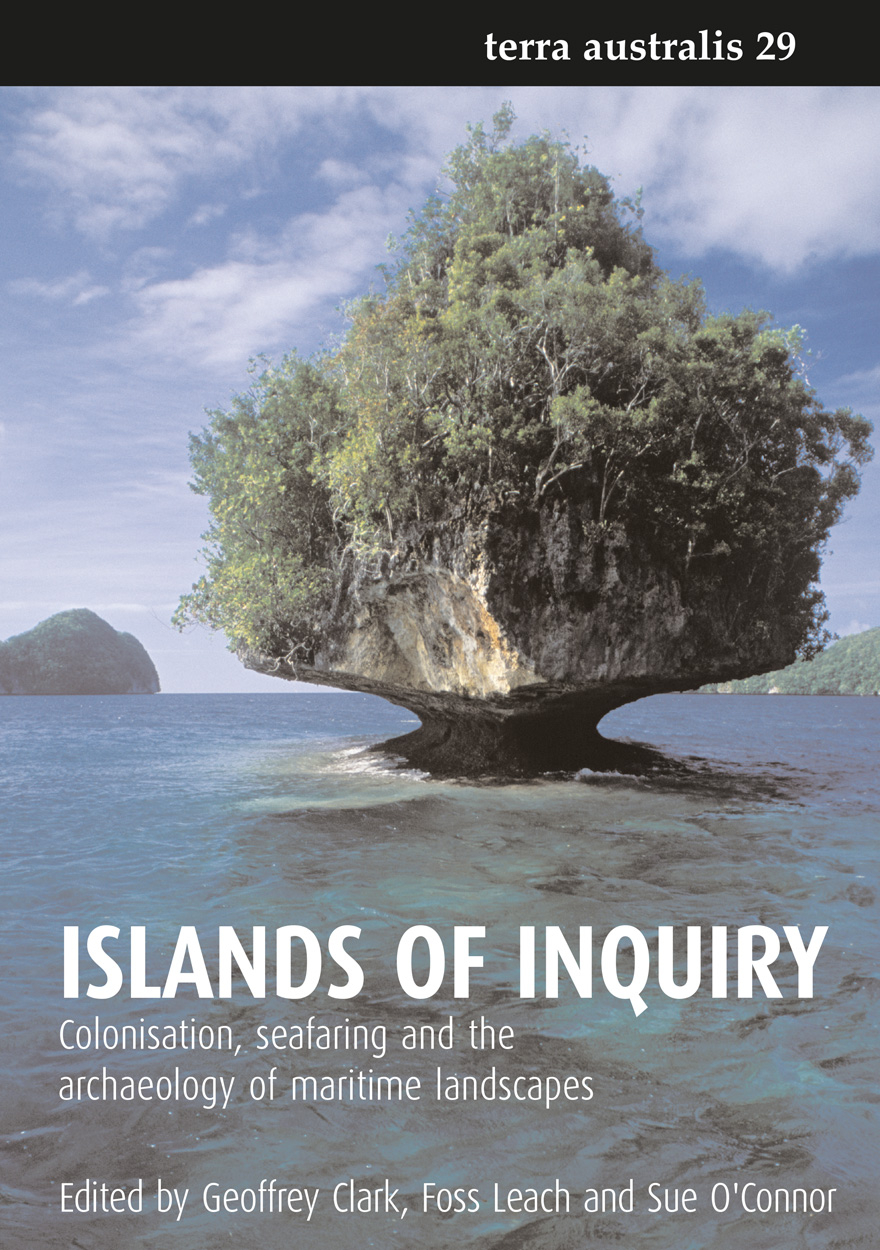Search titles
Displaying results 31 to 40 of 46.

Altered Ecologies »
Fire, climate and human influence on terrestrial landscapes
Edited by: S. Haberle, J. Stevenson, M. Prebble
Publication date: November 2010
Like a star chart this volume orientates the reader to the key issues and debates in Pacific and Australasian biogeography, palaeoecology and human ecology. A feature of this collection is the diversity of approaches ranging from interpretation of the biogeographic significance of plant and animal distributional patterns, pollen analysis from peats and lake sediments to discern Quaternary climate change, explanation of the patterns of faunal extinction events, the interplay of fire on landscape evolution, and models of the environmental consequences of human settlement patterns. The diversity of approaches, geographic scope and academic rigor are a fitting tribute to the enormous contributions of Geoff Hope. As made apparent in this volume, Hope pioneered multidisciplinary understanding of the history and impacts of human cultures in the Australia- Pacific region, arguably the globe’s premier model systems for understanding the consequences of human colonization on ecological systems. The distinguished scholars who have contributed to this volume also demonstrate Hope’s enduring contribution as an inspirational research leader, collaborator and mentor. Terra Australis leave no doubt that history matters, not only for land management, but more importantly, in alerting settler and indigenous societies alike to their past ecological impacts and future environmental trajectories.

The Early Prehistory of Fiji »
Edited by: Geoffrey Clark, Atholl Anderson
Publication date: December 2009
I enjoyed reading this volume. It is rare to see such a comprehensive report on hard data published these days, especially one so insightfully contextualised by the editors’ introductory and concluding chapters. These scholars and the others involved in the work really know their stuff, and it shows. The editors connect the preoccupations of Pacific archaeologists with those of their colleagues working in other island regions and on “big questions” of colonisation, migration, interaction and patterns and processes of cultural change in hitherto-uninhabited environments. These sorts of outward-looking, big-picture contextual studies are invaluable, but all too often are missing from locally- and regionally-oriented writing, very much to its detriment. In sum, the work strongly advances our understanding of the early prehistory of Fiji through its well-integrated combination of original research and the reinterpretation of existing knowledge in the context of wider theoretical and historical concerns. In doing so The Early Prehistory of Fiji makes a truly substantial contribution to Pacific and archaeological scholarship.
Professor Ian Lilley, The University of Queensland

Archaeological Science Under a Microscope »
Studies in Residue and Ancient DNA Analysis in Honour of Thomas H. Loy
Edited by: Michael Haslam, Gail Robertson, Alison Crowther, Sue Nugent, Luke Kirkwood
Publication date: July 2009
These highly varied studies, spanning the world, demonstrate how much modern analyses of microscopic traces on artifacts are altering our perceptions of the past. Ranging from early humans to modern kings, from ancient Australian spears or Mayan pots to recent Maori cloaks, the contributions demonstrate how starches, raphides, hair, blood, feathers, resin and DNA have become essential elements in archaeology’s modern arsenal for reconstructing the daily, spiritual, and challenging aspects of ancient lives and for understanding human evolution. The book is a fitting tribute to Tom Loy, the pioneer of residue studies and gifted teacher who inspired and mentored these exciting projects.

The Disaster of the Third Princess »
Essays on The Tale of Genji
Authored by: Royall Tyler
Publication date: June 2009
These seven essays by the most recent English translator of The Tale of Genji emphasize three major interpretive issues. What is the place of the hero (Hikaru Genji) in the work? What story gives the narrative underlying continuity and form? And how does the closing section of the tale (especially the ten “Uji chapters”) relate to what precedes it? Written over a period of nine years, the essays suggest fresh, thought-provoking perspectives on Japan’s greatest literary classic.

New Directions in Archaeological Science »
Edited by: Andrew Fairbairn, Sue O'Connor, Ben Marwick
Publication date: February 2009
Archaeological Science meetings will have a personality of their own depending on the focus of the host archaeological fraternity itself. The 8th Australasian Archaeometry meeting follows this pattern but underlying the regional emphasis is the continuing concern for the processes of change in the landscape that simultaneously effect and illuminate the archaeological record. These are universal themes for any archaeological research with the increasing employment of science-based studies proving to be a key to understanding the place of humans as subjects and agents of change over time.
This collection of refereed papers covers the thematic fields of geoarchaeology, archaeobotany, materials analysis and chronometry, with particular emphasis on the first two. The editors Andrew Fairbairn, Sue O’Connor and Ben Marwick outline the special value of these contributions in the introduction. The international nature of archaeological science will mean that the advances set out in these papers will find a receptive audience among many archaeologists elsewhere. There is no doubt that the story that Australasian archaeology has to tell has been copiously enriched by incorporating a widening net of advanced science-based studies. This has brought attention to the nature of the environment as a human artefact, a fact now more widely appreciated, and archaeology deals with these artefacts, among others, in this way in this publication.

Dreamtime Superhighway »
Sydney Basin Rock Art and Prehistoric Information Exchange
Authored by: Jo McDonald
Publication date: August 2008
Dreamtime Superhighway presents a thorough and original contextualization of the rock art and archaeology of the Sydney Basin. By combining excavation results with rock art analysis it demonstrates that a true archaeology of rock art can provide insights into rock art image-making in people’s social and cultural lives. Based on a PhD dissertation, this monograph is a significantly revised and updated study which draws forcefully on rich and new data from extensive recent research—much of it by McDonald herself. McDonald has developed a model that suggests that visual culture—such as rock artmaking and its images and forms—could be understood as a system of communication, as a way of signaling group identifying behaviour. For the archaeologist of art, the anthropologist of art and those of us who try to think about past worlds… this monograph is a must read.
Margaret W. Conkey
University of California, Berkeley

Islands of Inquiry »
Colonisation, seafaring and the archaeology of maritime landscapes
Edited by: Geoffrey Clark, Foss Leach, Sue O'Connor
Publication date: June 2008
This collection makes a substantial contribution to several highly topical areas of archaeological inquiry. Many of the papers present new and innovative research into the processes of maritime colonisation, processes that affect archaeological contexts from islands to continents. Others shift focus from process to the archaeology of maritime places from the Bering to the Torres Straits, providing highly detailed discussions of how living by and with the sea is woven into all elements of human life from subsistence to trade and to ritual. Of equal importance are more abstract discussions of islands as natural places refashioned by human occupation, either through the introduction of new organisms or new systems of production and consumption. These transformation stories gain further texture (and variety) through close examinations of some of the more significant consequences of colonisation and migration, particularly the creation of new cultural identities. A final set of papers explores the ways in which the techniques of archaeological science have provided insights into the fauna of islands and the human history of such places. Islands of Inquiry highlights the importance of an archaeologically informed history of landmasses in the oceans and seas of the world.

Oceanic Explorations »
Lapita and Western Pacific Settlement
Edited by: Stuart Bedford, Christophe Sand, Sean P. Connaughton
Publication date: November 2007
Lapita comprises an archaeological horizon that is fundamental to the understanding of human colonisation and settlement of the Pacific as it is associated with the arrival of the common ancestors of the Polynesians and many Austronesian-speaking Melanesians more than 3000 years ago. While Lapita archaeology has captured the imagination and sustained the focus of archaeologists for more than 50 years, more recent discoveries have inspired renewed interpretations and assessments. Oceanic Explorations reports on a number of these latest discoveries and includes papers which reassess the Lapita phenomenon in light of this new data. They reflect on a broad range of interrelated themes including Lapita chronology, patterns of settlement, migration, interaction and exchange, ritual behaviour, sampling strategies and ceramic analyses, all of which relate to aspects highlighting both advances and continuing impediments associated with Lapita research.

Lithics in the Land of the Lightning Brothers »
The Archaeology of Wardaman Country, Northern Territory
Authored by: Chris Clarkson
Publication date: September 2007
Lithics in the Land of the Lightning Brothers skilfully integrates a wide range of data-raw-material procurement, tool design, reduction and curation, patterns of distribution and association-to reveal the major outlines of Wardaman prehistory. At the same time, the book firmly situates data and methods in broad theoretical context. In its regional scope and thorough technological approach, this book exemplifies the best of recent lithic analysis and hunter-gatherer archaeology.
Any archaeologist who confronts the challenge of classifying retouched stone tools should consult this volume for a clear demonstration of reduction intensity as a source of size and form variation independent of “type.” Yet the demonstration is not merely methodological; Clarkson shows how the measurement of reduction intensity informs analysis of technological diversity and other cultural practices.
In Clarkson’s hands, Wardaman prehistory emerges as a particular record of the human past. Yet the book is also a case study in prolonged cultural response to environmental conditions and the way in which cultures persist and reproduce themselves over long spans of time. The result is an analytical tour de force that will guide hunter-gatherer archaeology in Australia and elsewhere for years to come.

'The Axe Had Never Sounded' »
Place, people and heritage of Recherche Bay, Tasmania
Authored by: John Mulvaney
Publication date: August 2007
‘This book meets well the triple promise of the title – the inter-connections of place, people and heritage. John Mulvaney brings to this work a deep knowledge of the history, ethnography and archaeology of Tasmania. He presents a comprehensive account of the area’s history over the 200 years since French naval expeditions first charted its coastlines. The important records the French officers and scientists left of encounters with Aboriginal groups are discussed in detail, set in the wider ethnographic context and compared with those of later expeditions.
‘The topical issues of understanding the importance of Recherche Bay as a cultural landscape and its protection and future management inform the book. Readers will be challenged to consider the connections between people and place, and how these may constitute significant national heritage.’
Professor Isabel McBryde, AO, FRAI, FAHA, FSA
The Australian National University
For more information on Aboriginal History Inc. please visit aboriginalhistory.org.au.



